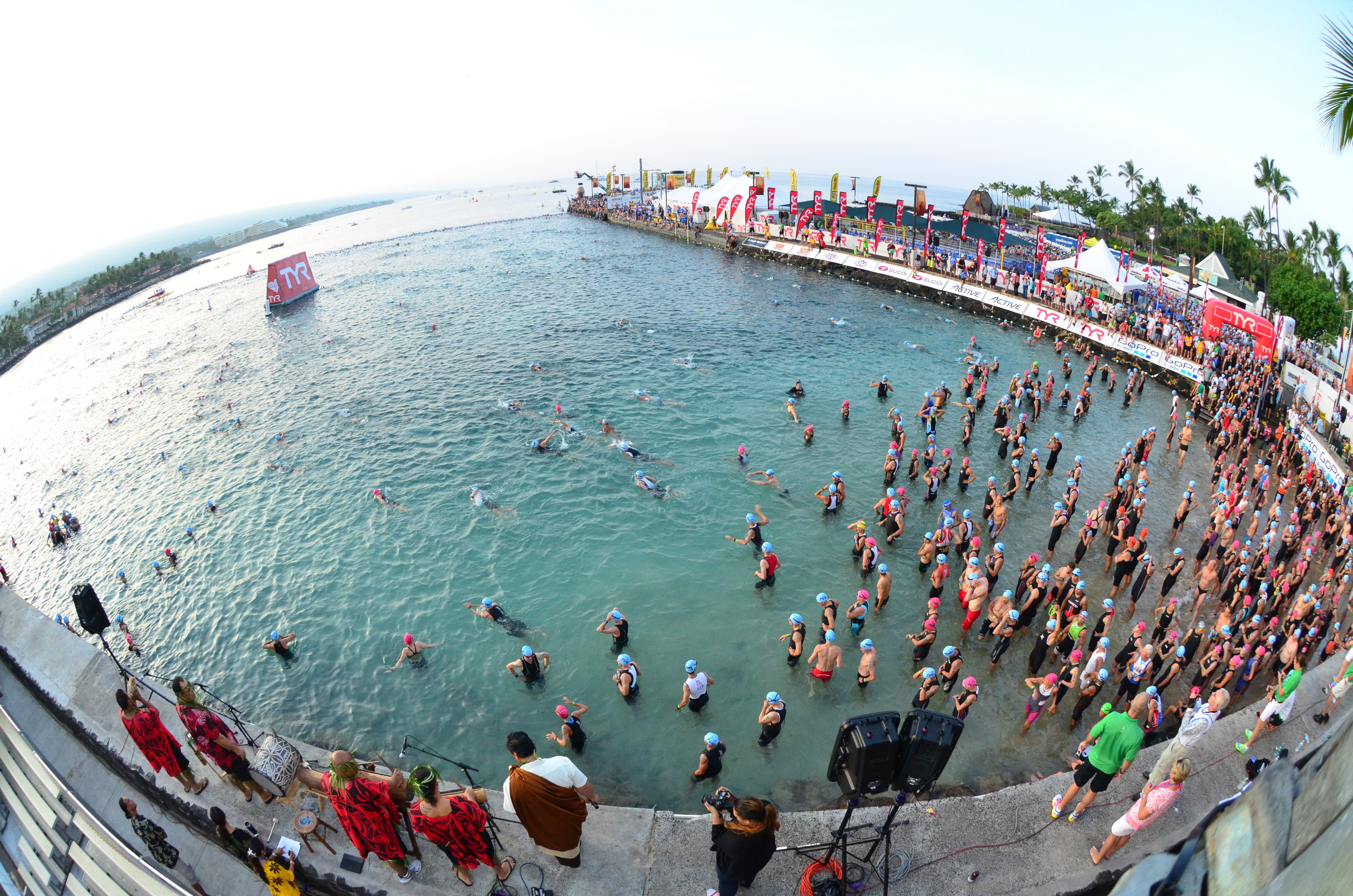“Will the introduction of a new extended wave swim start at Kona reach it’s goal of reducing peak athlete density on the bike course?”
With Kona upon us, one of the newest features of this years race will be the new swim start format, with an extended age group wave start. What this means is instead of the split male/female start, we now have 8 wave starts with combines age groups (including a legacy start wave).
I spoke about this at length with athletes in my community when it was announced, and as much as we may want to see or experience the mass start spectacle at Kona, this is how I see the breakdown of this change.
Justification
As a competitor, who competed when it was a mass start and when it was a split male/female start, I can appreciate the problems with congestion on the bike. After the announcement of the new start format, Mr Messick (Ironman CEO) stated that they were making the change to attempt to reduce bike course congestion and make it a fairer race for everyone. He also mentioned that is wasn’t Ironman’s intention to reduce athlete numbers in the future, if anything they wanted to give more athletes the opportunity to race Kona. Realistically with the increasing numbers of athletes on course, this may be the only way to attempt to remedy bike course congestion - we will see!
Is this justification fair? In my opinion yes. If an athlete is making the commitment to train, race, qualify and compete in Kona, there are certain things you deserve, a fair race is one of these. We know from previous experience that congestion is heavy for the first 60-100km of the bike, unless you are a super swim/biker or lucky with the time you land on the bike course. With athletes not really understanding the rules around drafting and dropping in OR just disregarding them, this is a good attempt to reduce congestion. It won’t pan out perfectly for everyone, BUT the intention is good.
It’s also important to note that the new wave starts don’t effect any cut off times.
Impact on the overall race
Elite age group athletes will not only have an eye on their finishing position in their category, but also the overall amateur field. If we look at last years Men’s race, this starting format wouldn’t have negatively impacted the top 10 of the overall age group field, so we should realistically still be in for a fair race up front. The biggest impact overall in the Men’s age group field could be the fast 40-44 athletes, the first in this category last year was 18th amateur over the line. In the Women’s age group field we see less of an impact as the numbers are slightly smaller, with less start waves, plus the average time gaps between the top 10 from 2018 are larger than in the men’s field.
I see the biggest impact being for the athletes who benefited from the larger start field and the congestion on the bike. The athletes who swim fast and get on the bike earlier with less congestion can get straight into their race plan without too much effort to surge and fight for position on the road. It will also impact those who are keen to happily draft their way around the first 60km.
I also hope that if things go to plan and congestion is slightly less on the bike, then officials will be more inclined to enforce drafting rules more appropriately as athletes will be riding in smaller groups. Again - only time will tell.
Who will benefit most from the change
I’m hoping everyone, but I’m not sure that will be the case.
I think that weaker swimmers who do not enjoy the congestion of larger starts, but are strong bike/runners can potentially make gains here, if they take advantage of the conditions and swim well. I do however, feel for the strong swimmers in the later wave starts that have to swim through lots of athletes in front of them. Also athletes that want to ride clean and challenge themselves on a great bike course will benefit if they get out of the swim in a favourable position.
What can you do as an athlete competing this year
Essentially do the same as successful athletes have done in previous years preparing for this event. You hopefully have been training specifically for the 3.8km non-wetusit swim and are prepared for a larger than normal start wave (compared to your average Ironman mass or rolling start).
Secondly, regardless of your start wave or swim exit time, ride the first portion of the bike controlled, within parameters you have set yourself. Be smart, race fair, but don’t throw away your race in the first 60km of the bike (believe me, I’ve been there, and the day can be long).
Finally, you are at the Ironman World Champs, the biggest spectacle in the sport on one of the toughest courses due to it’s harsh race conditions. If you are spending all of your time worrying about the swim start, then you have probably got your priorities wrong. Make sure you enjoy the experience and stick to your race plan as much as you can to give yourself the opportunity to be challenged later in the day, when the race really starts to unfold.
I’d love to know your thoughts, especially if you’re racing this year.








